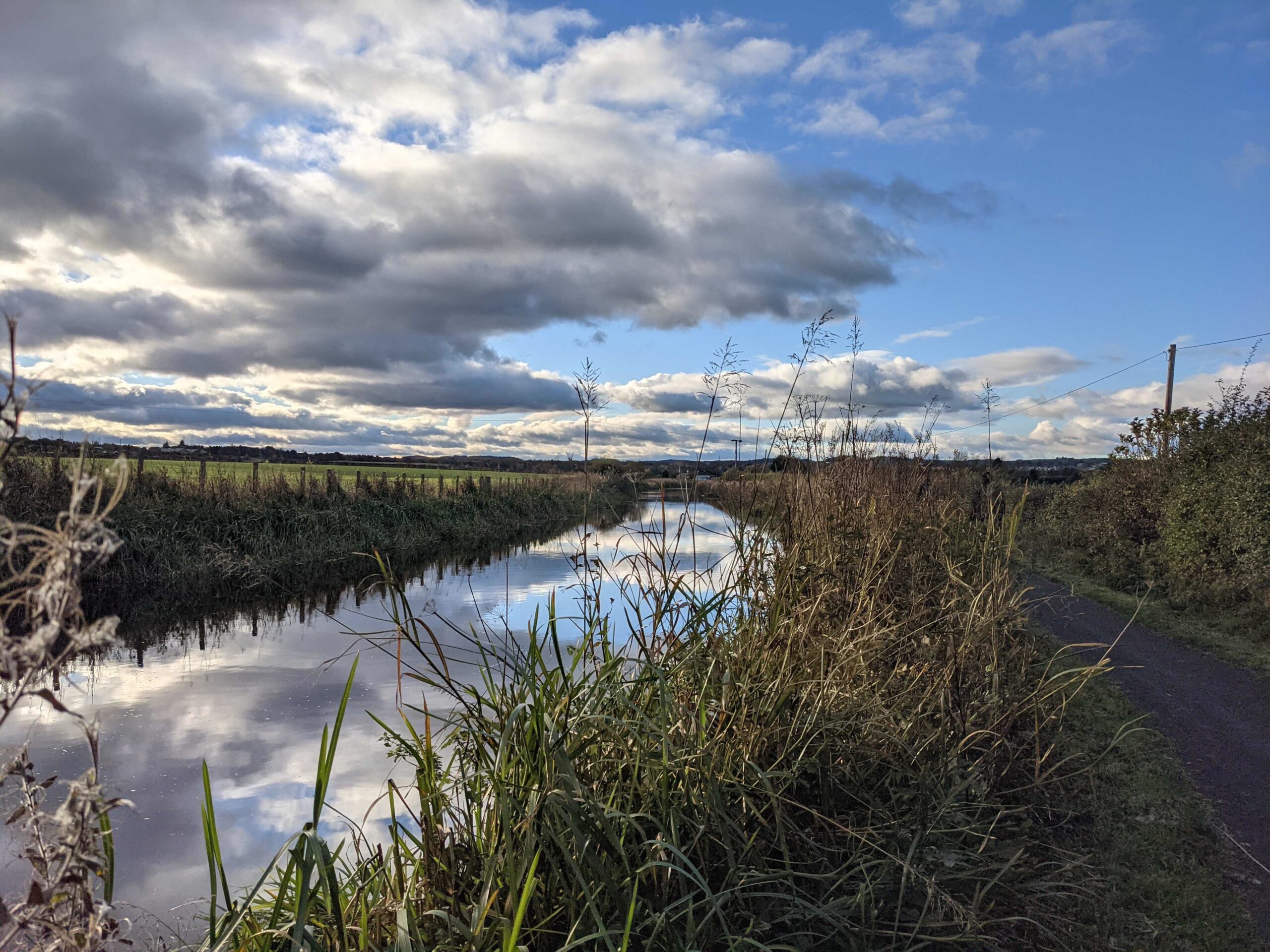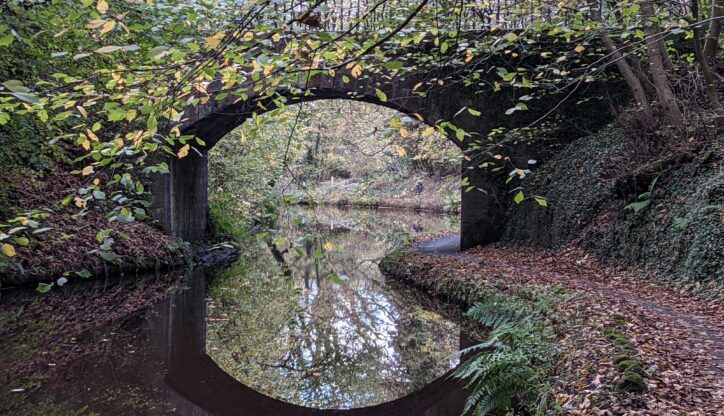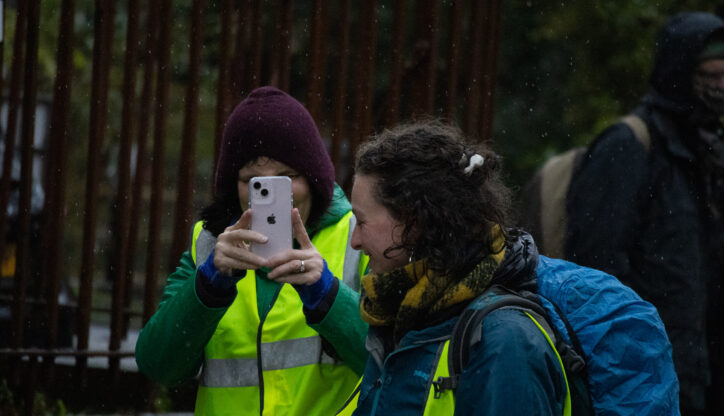
Jesuit Missions COP 26 Pilgrimage
While I don’t have a definitive answer to this question there are a few ideas I am exploring as I traverse the canal path from Edinburgh to Glasgow on my first official walking Pilgrimage.
In 2019 Professor Shane O’Mara from TCD published a book ‘In Praise of Walking’. In it he goes into detail about how the act of walking is beneficial for our health, cogitative function and mood – aiding our creativity and keeping us happy. “One of the great overlooked superpowers we have is that, when we get up and walk, our senses are sharpened. Rhythms that would previously be quiet suddenly come to life, and the way our brain interacts with our body changes.”
A largely accessible activity which does not take large investments of equipment which people of a range of physical abilities can partake in. While reading this book over a year ago I was fascinated by the science behind, and the benefits of, something as simple as going for a walk. I understood and have experienced the joys of walking but what exact features makes it different from a pilgrimage however eluded me.
More recently O’Mara turned his attention to focusing specifically on pilgrim walking; “Pilgrim walking is a significant human activity requiring weighty commitments of time, action and belief, as well as community support.” However, he does so with an interest in their suitability as a ‘living laboratory’ where the health benefits as well as changes in social interaction among the other pilgrims can readily be examined. Delving into this aspect of pilgrimages, while interesting in and of itself, does not satisfactorily answer the question about what makes a pilgrimage distinct.
The why as well as the how
Perhaps it is the sense of purpose, the intention, which is associated with pilgrimages which makes them different from a long walk. The route taken by both pilgrimages and hikes takes much thought and planning however this is for different reasons. The pinnacle of a hike could be just that – reaching the top of a mountain. The sense of achievement upon reaching the top is amplified by the effort, perseverance and endurance undergone as well as the usually scenic views and the promise of help from gravity for the decent. This experience of nature is not exempt from pilgrimages however it is not usually its core propose.
Undertaking a pilgrimage is not usually done solely to satisfy the need to be surrounded by nature or to exercise but can result from deeply personal, spiritual and faithful decision. While the destination is important, the journey is equally so. The slow and steady plodding calms and soothes what Pope Francis terms the ‘rapidification’ of modern society. The point of the exercise is not to rush from one point to another but to fully experience the journey.
Along the way
Walking from Edinburgh to Glasgow in this Pilgrimage to you have constant reminders of the importance of environmental protection and the beauty of nature as well as the pressures on nature and challenges we face in meeting our goals. Flanked on both sides by diverse linear forests alive with, to name a few, ferns, hawthorn, bramble and beach, this oasis of calm can give way to areas which are more heavily managed with agricultural land, retail and industrial infrastructure abutting close to the canal tow path. The path is heavily used by walkers and cyclists alike illustrating what is possible but the heavy sounds of traffic is never far. The difference in the space allocation for safe active transport and cars is very obvious when the call of ‘bike’ or ‘runner’ ripples through the pilgrims resulting in moving to the side to allow the faster moving people to pass. Likewise, the beautiful sound of waterfalls and birds is interrupted when we pass slowly below a flight path. Planes, potentially carrying delegates and observers to COP.
Moving from the canal and into the hills is a welcome change of scenery. Hiking along the Antonine Wall, a fortification built by the Romans, offered incredible views across the valley. The hike made particularly special by an outdoor mass, something I have not experienced before.
Towards the march and COP26
This pilgrimage is a little different to what I would normally think of as a pilgrimage – we are not following the steps of a sacred route. The destination we have in mind is not a particularly holy place. We are walking towards an international conference, the outcome of which the course of the future depends. We are not alone in this endeavour. Over the past week faith based groups have been arriving in Glasgow after arduous journeys.
Our pilgrimage culminated in joining the march in Glasgow, organised by the COP26 Coalition, on the 6th November – the day of global action. Estimated to involve upwards of 100,000 people of all faiths and none, we walked though Glasgow demanding climate justice. Those of us in the Faith block of the march could neither see the start or the end of it. The sounds of drums, chants, and in our particular section hymns, echoed across the mass of people. So many diverse groups in society coming together in this way reflects the importance and urgency of the crisis.
Marching through the streets of Glasgow allows us to reflect on the crisis and the role we play within it. It highlights the injustice of the climate crisis and strengthens the conviction that we as people of faith can make a difference.



